Contents
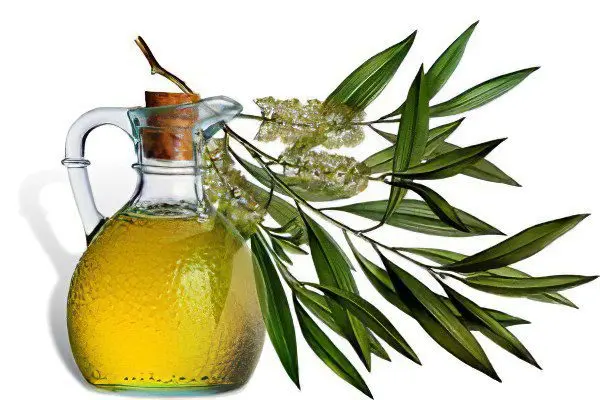
Tea tree oil is a special type of essential oil obtained by distilling tea tree leaves with water. Tea tree or melaleuca, as it is also called, grows in the tropics and resembles eucalyptus in appearance. The first miraculous properties of the leaves of this shrub were discovered by the Australian Aborigines. They used them to treat scurvy, food poisoning, and skin rashes. With snake bites and tropical infections, the natives resorted to the help of juice obtained from tea tree leaves. Its effect was so strong that sometimes even the most hopeless patients managed to recover.
In Europe, the beneficial properties of the tea tree became known thanks to James Cook. Together with the expedition, he visited Australia in the 18th century, where he saw how the local Aborigines fight diseases and infections using natural remedies. After that, its real name was assigned to the plant, since the decoction of its leaves tasted like strong tea. Despite the fact that in the 18th century the discovery of the benefits of tea tree products did not make much impression, after a while people were able to appreciate its value.
Tea tree oil has been studied by scientists since the advent of aromatherapy. Studies have shown that it has a wide range of therapeutic effects, can have a positive effect on the human body and is not inferior in its properties to many strong antibiotics. [1], [2]
Only at the beginning of the 20th century, experiments were carried out proving that tea tree oil is an effective antiseptic. It is non-toxic and non-irritating. With its help, it was possible to heal wounds, cuts much faster, to cope with diseases that affect the genitourinary system, nasopharynx, and rectum. It has been used to fight fungal infections.
However, all its properties were fully studied only during the Second World War. Soldiers’ first-aid kits always contained tea tree oil. Treatment with them allowed wounds to heal much faster than the use of traditional drugs. After it turned out that the blood enhanced the healing properties of tea tree oil. Its action helped to heal even lacerated wounds in a short time. The name of the oil, which is used in Australia, is not accidentally translated as “ambulance”.
Process for making tea tree oil
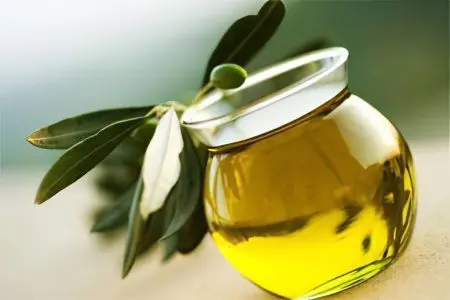
When processing the leaves of a plant, it is important to preserve all their medicinal properties. In this regard, a method that involves steam distillation has been chosen as the main method for the production of tea tree essential oil. Experiments have shown that it is the most effective and gentle.
Crushed tea tree leaves are steamed. The whole process takes place under high pressure. At the same time, essential oil is also captured along with water vapor. When the steam has cooled, it can be separated and filtered. The tea tree oil extracted in this way is packaged in separate containers, and it goes on sale.
The duration of distillation affects the quality of the oil obtained. Volatile substances can be saved the more, the longer the leaves are treated with water vapor. However, such a duration entails significant costs, which means that the resulting oil will have to be sold at a high price. For this reason, retail stores most often offer tea tree oil, which was obtained through the use of an accelerated method. Although the product is also of high quality. Inexpensive and healthy tea tree oil today is widely used in various fields of human activity both in Russia and abroad.
Benefits of tea tree oil
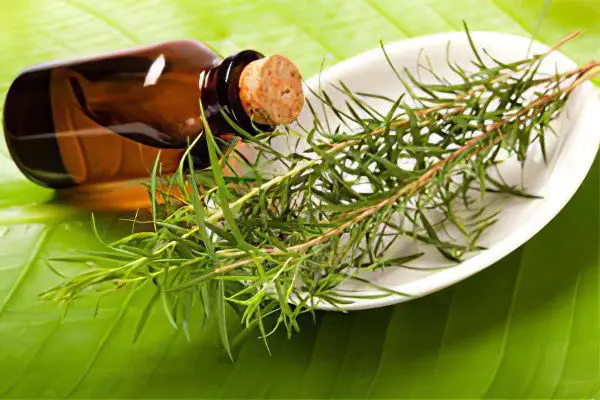
Tea tree leaves and the oil obtained from them have a tart and invigorating smell. It has bitter and spicy notes. When you inhale the oil, you first feel a light aroma of a freshly cut forest. After that, sharp and bitter notes are already noticeable. Although the smell is based on a fruity aroma. At first glance, this combination may seem somewhat strange. Due to this unusual and mysterious smell, tea tree oil is used for aromatherapy. In addition, it is part of many perfume blends. The aroma of tea tree is successfully complemented by spicy smells.
From stress and depression. The use of tea tree in aromatherapy allows you to get rid of fears, depression and obsessions. Patients feel much calmer after the sessions. Such aromatherapy is necessary for those who would like to increase their efficiency and overcome stress. Tea tree oil will help activate thought processes, strengthen memory and improve perception of reality.
The oil has unique antibacterial, antiviral and antifungal properties. All these qualities make it one of the most effective natural antibiotic immunostimulants. This tool can be a worthy alternative to drugs obtained artificially. Tea tree oil helps with various infections, and also speeds up the recovery process after an illness. Colds and flu in children will recede faster if used for aromatherapy.
Tea tree oil contains a number of compounds, including terpinen-4-ol, which has been shown to kill certain types of bacteria, viruses, and fungi. [3], [6]
Anti-inflammatory and regenerating effect. Studies have shown that tea tree oil helps reduce inflammation and triggers the activity of white blood cells, which play an important role in the healing process. [4], [5]
Terpinen-4-ol also increases the activity of white blood cells, which help fight germs and other foreign invaders in the body.
These germ-fighting properties make tea tree oil a valuable natural remedy for treating bacterial and fungal skin conditions, preventing infections and promoting wound healing. [7]
In a small study of 10 people, adding tea tree oil to traditional wound care was found to reduce healing time in 9 out of 10 participants. [8]
Antifungal effect. Tea tree oil contains compounds that help fight mold growth on fruits and vegetables. Adding tea tree oil to the water when rinsing fruits and vegetables can help keep food fresh without mold. [9], [10]
Antioxidant activity. The Journal of Agricultural and Food Chemistry published a study highlighting the antioxidant activity of tea tree essential oil. [16]
Hypoallergenic. The wide range of applications of this natural remedy is due to the fact that it rarely causes skin irritation, even if its dosage is exceeded. Avoid using tea tree oil only if you are intolerant to it.
Application of tea tree oil
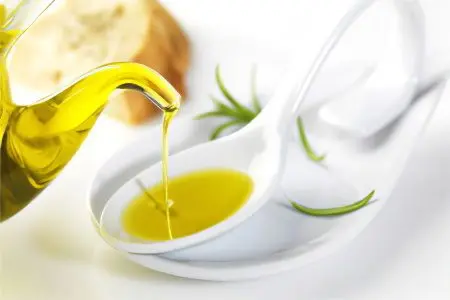
This natural remedy can be useful in the following cases:
When injured. For asepsis and antisepsis of wounds, scratches, cuts, skin rashes in case of allergic reactions; [11]
At the Otis. Tea tree oil is safe to apply topically to almost all areas of the body, including the ear canal. For people suffering from ear infections, especially children, this can be very painful. [12] Just a few drops of tea tree oil in the ear can beat an infection due to the natural antibacterial nature of the oil and even reduce pain and speed up the healing process.
With gastrointestinal infections. An aqueous solution of oil helps to cope with stomach and intestinal infections. According to Austrian doctors, such a natural remedy is much more effective than pharmaceutical preparations of a similar effect; [13]
With SARS, runny nose, sinusitis and cough. The oil will be useful for patients suffering from acute respiratory viral diseases; with colds, coughs, bronchitis; [14]
With a runny nose or sinusitis, they are recommended to lightly lubricate the wings of the nose. This method of treatment allows you to quickly cope with congestion. With sinusitis, a positive effect can be achieved with regular use. In this case, precautions should be taken, as too frequent use causes excessive dryness of the skin.
Gargling helps to quickly cope with coughs and sore throats. They can be carried out with a solution of one glass of water and essential oil (10 drops). It is added not only to intimate hygiene products, but also to shampoos and shower gels. It only takes a few drops, so essential oil is used sparingly. It is also combined with other oils, such as lavender. It can also be used along with rosemary or nutmeg oil. Together they will give an amazing aroma, and the benefits of them will only increase.
During an epidemic of influenza or colds, a drop of oil should be applied to the back of the hand or on the neck to protect against viruses. However, if it was not possible to avoid infection, it is worth putting a compress on the chest. To do this, add tea tree oil (2 drops) to heated vegetable oil (2 tablespoons), and then wet a clean cloth or towel with the resulting mixture. Such a compress should be placed strictly on the chest, avoiding the heart area. A film and a warm scarf or scarf are placed on the towel. The compress must be kept for 1-1,5 hours.
The tool is effective for gynecological problems. It is used to treat various STDs, fungal infections, microflora imbalances;
With oncology. Aromatherapy is recommended for patients with suspected oncology. The oil slows down the growth of both malignant and benign tumors. Due to this property, the oil is used by proctologists and gynecologists;
Diathesis and chickenpox in children. Diathesis and chickenpox can be treated with oil. It is often used in children’s pediatrics, since the child’s body perceives preparations of natural origin much better. It also helps cure viral infections such as colds, flu, mumps, measles, and smallpox. [15];
In dentistry. The oil is used by dentists in order to heal wounds after tooth extraction and other operations, in the treatment of gums.
In cosmetology. Oil has been widely used in cosmetology due to its antibacterial and anti-inflammatory properties. It helps to get rid of rashes by improving the overall condition of the skin, stimulates hair growth and gives them shine. With its help, it is possible to cope with puffiness in a short time. It also allows you to even out the skin, eliminating the damage, thickening, and neoplasms formed in the upper layer of the epidermis. Those who suffer from warts should also use tea tree oil.
Women with oily and problematic skin are recommended to include cosmetics based on such oil in their daily care. A few drops of it can be added to intimate hygiene products to enhance their antibacterial properties.
Aromatherapy. Tea tree oil is often used to scent rooms. Thus, it is possible not only to spread a pleasant bitter smell, but also to disinfect the air. Aromatherapy with tea tree oil is also an excellent prevention of pathogenic bacteria and viruses.
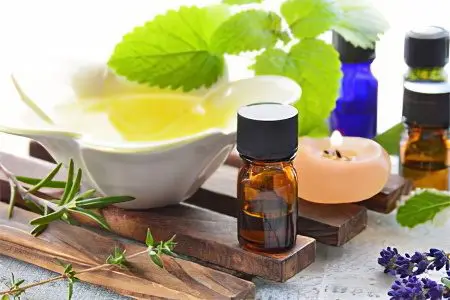
For an aromatic bath, you only need a few drops of this essential oil. It can also be combined with lavender oil. In this case, you will need 4 drops of each ingredient. Compresses, inhalations and dressings are made on the basis of a solution, for the preparation of which a glass of water and 4 drops of oil are used. For colds, inhalations are performed. This procedure lasts 8-10 minutes and involves inhaling steam over a container of hot water or herbal infusion, to which 5 drops of essential oil have been added.
Well help with colds aromabaths. Add 10 drops of tea tree oil to a glass of milk. The resulting mixture should be poured into a bath filled with warm water. You can take it no more than 10 minutes. Such a bath will be useful not only for patients suffering from colds or viral diseases, but also for those who have acne or other types of irritation on their skin. By evening, many are tired and swollen legs. To get rid of discomfort, you can hold them in a bath with warm water and three drops of tea tree oil. After the procedure, you will feel lightness in the legs, the feeling of fatigue will disappear.
Tea Tree Oil Hand Sanitizer
Tea tree oil is the perfect natural hand sanitizer. Studies have shown that it kills several common disease-causing bacteria and viruses, including E. E. coli coli , S. pneumoniae и H. influenzae
Here’s a simple recipe for making your own moisturizing, all-natural hand sanitizer using tea tree oil.
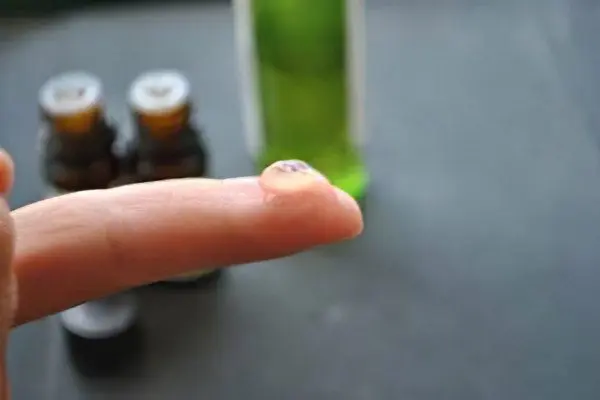
Ingredients:
5-10 drops of lavender essential oil
30 drops of tea tree essential oil is a concentration of 0,5%
1 tablespoon witch hazel or high quality vodka
240 ml 100% pure aloe vera gel
A teaspoon of vitamin E oil is a natural preservative to extend shelf life (will also help soften hands!)
Method of preparation:
Pour the essential oils and vitamin E oil into a small glass bowl or container and stir.
Add the witch hazel (or alcohol) to the oils and whisk again.
Mix this mixture with aloe vera gel and mix thoroughly.
The finished mixture must be stored in a dark glass container to avoid light from falling on the liquid.
For storage and easy carrying in your purse or backpack, small glass vials are ideal, as shown in the pictures.
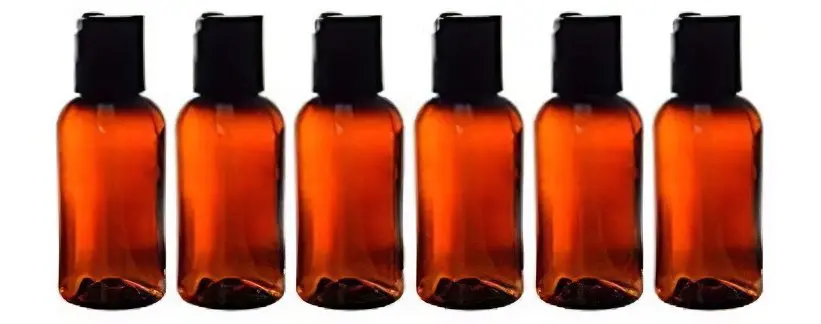
Shake the bottle gently before each use.
Tea tree oil against insects
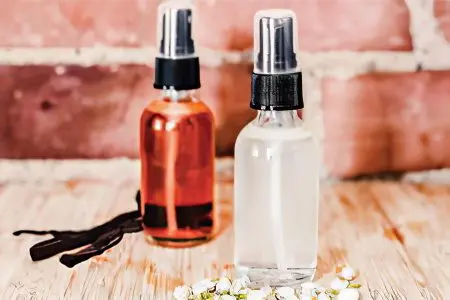
Tea tree oil can help avoid a lot of insects.
One study found that 24 hours after being treated with tea tree oil, cows had 61% fewer flies than cows not treated with tea tree oil. [18]
In addition, a lab study found that tea tree oil has a greater ability to repel mosquitoes than DEET, the most common active ingredient in commercial insect repellents. [19]
How to make DIY bug spray at home
To make your own mosquito spray, you will need:
Sprayer
Ingredients
20 drops of citronella essential oil
20 Lavender Essential Oil Drops
20 drops tea tree oil
20 drops lemongrass essential oil
20 drops of geranium essential oil
1 teaspoon neem oil (optional)
1 tablespoon of vodka
Distilled water
Mix all the oils in an aerosol can or any glass spray bottle. Then add alcohol to the bottle and mix thoroughly.
Shake the bottle well before use.
Application: spray the prepared spray on all exposed parts of the body that are usually bitten by insects, hands, feet, neck. Avoid contact with clothing.
Natural deodorant with tea tree oil

The antibacterial action of tea tree oil can help control armpit odor associated with perspiration.
Sweat itself doesn’t smell. However, when secretions from the sweat glands combine with bacteria on the skin, a moderate to strong odor is produced.
Tea tree oil is often found in deodorants because it can act as a powerful deodorizing agent, eliminating not only odor but also bacteria and toxins that can increase its activity. [21]
Here are a few options for safe and effective natural deodorants that you can make yourself with tea tree oil and a few other ingredients.
Recipe № 1:
Ingredients
3 tablespoons coconut oil
3 tablespoons shea butter
1/4 cup Arrow Root Powder or cornstarch
1/4 cup baking soda
1 tablespoon beeswax
20-30 drops of tea tree or lavender essential oil.
Preparation
Melt the coconut oil and shea butter and beeswax in a glass jar. To do this, put the jar in a pot of boiling water for a water bath effect.
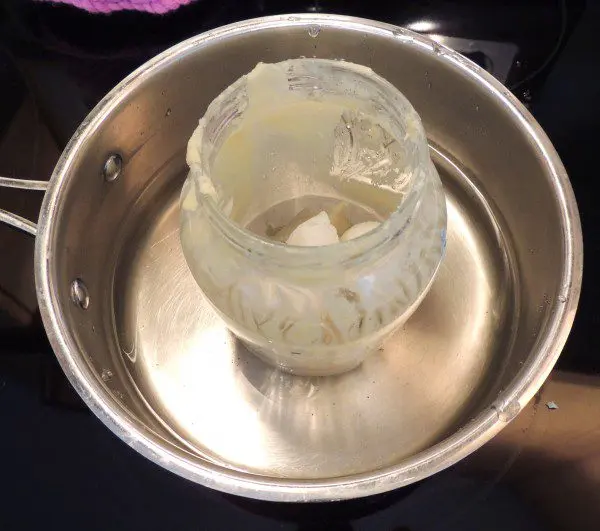
Once they have melted together, remove from the heat and add the baking soda, arrowroot powder, and tea tree oil.

Pour the liquid into silicone molds, a jar, a small container, or an old deodorant bottle (thoroughly cleaned of old deodorant). If you’re using an old deodorant bottle, wait a few minutes for the mixture to thicken a bit – this will make it easier to apply.
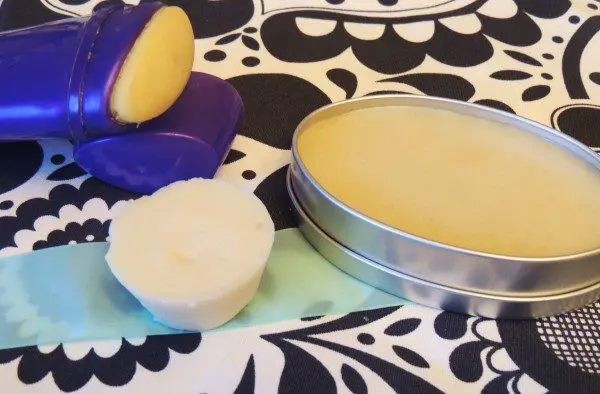
Allow the mixture to dry for a few hours or overnight before using.
Recipe № 2:
Ingredients
3 tablespoons coconut oil
3 tablespoons powder or corn starch
3 tablespoons of baking soda
10-20 drops of tea tree essential oil or lavender essential oil
Preparation
Melt the coconut oil using a water bath.
Once melted, remove from heat and add remaining ingredients.
Pour the mixture into molds and leave for a couple of hours. Apply with fingers.
Tea tree oil for acne
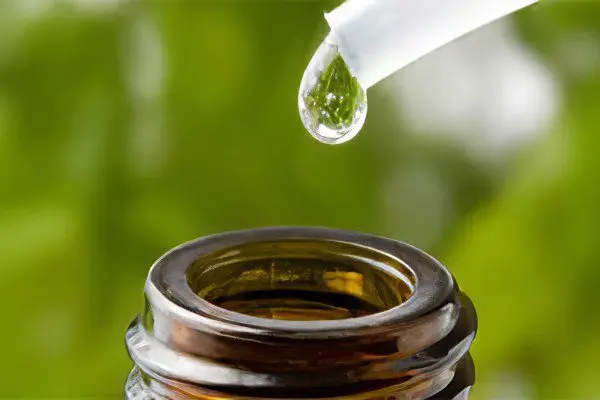
The antiseptic and antibacterial properties of tea tree oil make it a very effective treatment for acne. It dries acne well and prevents their spread throughout the face. In addition, tea tree oil has virtually no side effects, so it is safe for the skin, even when used in its pure form. On its basis, you can also prepare lotion and mask.
In its pure form, tea tree oil should be applied with a cotton pad or stick to acne in the morning and evening on thoroughly cleansed skin. A positive result is usually visible after a few days. Most noticeable changes are noted after 2-3 weeks. It is important to apply tea tree oil every day. Only with regular use can improve the condition of the skin.
If you add 3 drops of tea tree oil to 5 tablespoons of boiled water, you can easily get an effective face lotion. It is suitable for both oily and combination skin. Use the lotion after cleansing in the morning and evening. It can also be prepared on the basis of herbal decoction. 2 tablespoons of calendula, sage or pharmacy chamomile pour a glass of boiling water and let it brew. The resulting broth must be filtered, add 9 drops of tea tree oil to it, and a natural and healthy acne lotion is ready. If the product is intended for oily skin, add a teaspoon of fresh lemon juice to it.
To prepare the mask, beat the egg white and add to it: tea tree oil (4 drops), lavender oil (2 drops), rosemary oil (2 drops), olive oil (2 drops). Apply the resulting mixture in an even layer on the face. Wash it off after 15 minutes. This mask is most effective in fighting acne on oily or combination skin.
A remedy for dry skin is prepared on the basis of one yolk, one teaspoon of olive oil, rosemary oil (2 drops), tea tree oil (4 drops). All ingredients must be carefully moved, and then apply the resulting mixture pointwise to the affected areas of the face. After 20 minutes, the mask should be washed off.
Before using any cosmetic product that contains tea tree oil, you should check the body’s reaction to it. To do this, apply a small amount of mask or lotion to the crook of the elbow. If after half an hour irritation does not appear, then the remedy can be used to treat acne on the face.
Tea tree oil can be a powerful weapon against acne. Several studies have shown that using tea tree oil can help reduce not only acne, but also reduce skin inflammation. [22], [23]
In one study, it was shown that the use of 5% tea tree gel for acne skin lesions, healing and reduction of lesions was three times higher than using a placebo. [24]
In another study, tea tree oil was found to be just as effective against acne as benzoyl peroxide, the most common acne medication. [25], [26]
tea tree oil for nail fungus

Nail fungus – this is an unpleasant disease, because of which not only the nails become ugly, but also have to endure constant discomfort. To cope with the causes and symptoms of infection allows tea tree oil. The simplest option for using this remedy in such cases is to apply it to the affected nail plates in its pure form.
Tea tree oil must be rubbed in thoroughly so that it penetrates deeply. In this case, it is necessary to avoid contact with the skin around the nails. After treatment, each finger should be sealed with adhesive tape or bandaged. The compress must be kept for at least 6 hours. The procedure should be performed in the morning and in the evening for 3 months to achieve a positive effect. For sensitive skin, where the use of tea tree oil provokes irritation, you can mix it with olive oil.
Effective for nail fungus and foot baths with the addition of honey, sea salt and soda. A teaspoon of each ingredient should be dissolved in a liter of hot water along with 20 drops of tea tree oil. It is necessary to keep your feet in the bath until the water cools down. Such procedures should be carried out daily for a month. Even if the symptoms of the disease pass earlier, it is necessary to carry out a full course of treatment.
For nail fungus, it is useful to rub a remedy made from olive, thyme and tea tree oil into the nail plate. All ingredients are mixed in equal proportions. The finished product is applied to each nail affected by the fungus and rubbed into it. After that, a few more drops of oil are again added on top. After 15 minutes, it is necessary to apply the product on the nail plate for the third time and rub it well with a toothbrush. Carry out the procedure daily until the symptoms of nail fungus pass.
Another recipe using tea tree oil that has proven effective in the fight against nail fungus, according to the results of the studies. [27][28]
Recipe:
Mix 1/4 cup arrowroot powder
1/4 cup baking soda
20-25 drops tea tree oil
Mix thoroughly and place in a closed vial.
Apply to clean, dry feet twice a day.
tea tree oil for face
Tea tree oil can be used to make a variety of face masks. They have a cleansing and toning effect. Mask recipes are presented in table 1.
Table 1 – face mask recipes:
Skin type for which the mask is suitable | Ingredients | Quantity | How to make a mask |
Oily and combination skin | Cosmetic clay | 2 teaspoons | Mix all the ingredients to make a thick paste. Keep the mixture on your face for 15 minutes |
Oat flakes | 2 teaspoons | ||
Kefir or curdled milk | 3 teaspoons | ||
Tea tree oil | 2 drops | ||
Problem Skin | blue clay powder | 1 tablespoon | Mix all the ingredients to get a uniform consistency. Keep the mixture on your face for 10 minutes |
Low fat sour cream | 2 teaspoons | ||
Tea tree oil | 2 drops | ||
For all skin types for a lifted look and tone | Green tea | 3 tablespoons | Pour flakes into strong brewed tea, add lemon juice and oil, then mix the mixture Keep the mixture on your face for 20 minutes |
Oat flakes | 1 tablespoon | ||
Lemon juice | 1 teaspoon | ||
Tea tree oil | 2 drops | ||
Anti-inflammatory mask for all skin types | Granular cottage cheese | 100 g | Mix all ingredients well Keep the mixture on your face for 15 minutes |
Decoction of chamomile | 30 ml | ||
Cosmetic clay | 50 g | ||
Apricot oil | 30 ml | ||
Tea tree oil | 7 drops |
tea tree oil for teeth whitening

Teeth Whitening. With the help of tea tree oil is available to anyone, because you can do it at home. If you carry out the procedure regularly, it will be possible not only to get rid of plaque, but also to cope with bleeding gums and tartar.
Apply a few drops of tea tree oil to the brush, and then brush your teeth thoroughly for 2 minutes. In this case, a slight numbness of the tip of the tongue may be felt. Before proceeding with the procedure, the teeth must be cleaned with a regular paste. After using the oil, its smell and taste remains in the mouth. You can get rid of it by rinsing your mouth with a weak solution of vinegar. The procedure is repeated every 3 days.
An alternative to whitening with a brush is rinsing. It is necessary to prepare a solution in advance, for which you need to take half a glass of water and 5 drops of tea tree oil. You can rinse your mouth with this remedy both before cleaning with a paste, and after daily. As a result, dark plaque will disappear from the teeth, they will become whiter and cleaner.
Fast and intense teeth whitening is done with tea tree oil and lemon. First, the teeth should be brushed with toothpaste. After that, apply 2 drops of tea tree oil and 1 drop of lemon oil to the washed brush, and then brush your teeth with it for 5 minutes. Such whitening can be performed once a week for a month. If the procedure is carried out too often, there is a risk of damaging the enamel.
Research shows that tea tree oil can fight germs that cause cavities and bad breath. [31], [32]
One study found that tea tree oil was more effective against plaque-causing bacteria than chlorhexidine, common disinfectants, and mouthwash. Moreover, its taste turned out to be less unpleasant. [33]
On the other hand, an older study found that tea tree oil does not appear to have much effect on plaque formation. [34]
tea tree oil for dermatitis
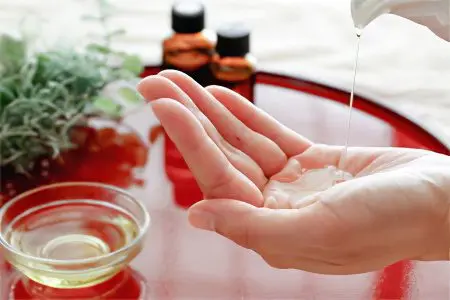
Tea tree oil can help relieve symptoms of inflamed skin.
A common form of skin irritation is contact dermatitis, which occurs when the skin comes into contact with an allergen such as nickel. Exposure to the allergen leads to redness, itching and sometimes soreness of the skin.
Animal and human studies show that applying tea tree oil can help reduce the severity of these symptoms. [35][36]
In a study comparing the effects of various treatments for contact dermatitis, tea tree oil was found to reduce symptoms by 40%, significantly more than standard treatments used to treat the condition. [37]
In addition, tea tree oil can help get rid of insect bites by reducing the itching, redness, and swelling that occurs when the body releases histamine to protect against insect saliva. [38]
Use this recipe to relieve skin inflammation:
Mix 10 drops of tea tree oil with one tablespoon of olive oil and one tablespoon of melted coconut oil.
Mix well and store in a sealed container.
Apply to the affected area up to two times a day until the symptoms disappear.
tea tree oil for psoriasis

Psoriasis is an autoimmune disease that manifests itself as redness, itching, and flaking of the skin.
Although there are medications that can relieve the symptoms of psoriasis, the disease itself is chronic and cannot be completely cured.
Tea Tree Oil Contains Anti-Inflammatory Compounds Newly Found May Help Relieve Symptoms of Psoriasis [39].
To help relieve psoriasis, mix 10-15 drops of tea tree oil with XNUMX tablespoons of melted coconut oil.
Application: lubricate the affected areas of the skin 2-3 times a day, as needed.
tea tree oil for papillomas
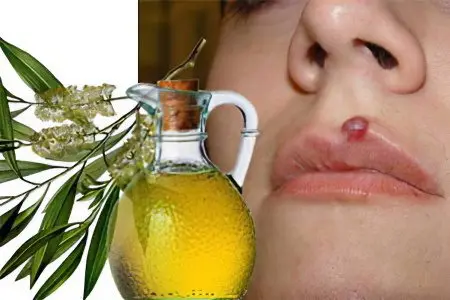
Papillomas are benign neoplasms on the skin that can occur on the human body. They can cause discomfort, and in the future – become the cause of a more serious disease. In traditional medicine, the procedure for cauterizing it with liquid nitrogen allows you to get rid of papilloma. In some cases, the tumor is removed surgically. Both types of procedures are quite painful, so many patients prefer to cope with papillomas using traditional medicine methods.
Tea tree oil can cure the disease. It is enough to treat them with papilloma several times a day. After the procedure, the affected area of u1bu10bthe body should be covered with a napkin or plaster. If the skin is too sensitive or papilloma has formed in the mucosal area, tea tree oil can be mixed with olive oil in a ratio of XNUMX:XNUMX.
tea tree oil for hair

Tea tree oil helps to restore the health and beauty of hair that is exposed to harmful factors daily. It can be added to shampoo, balm with every shampoo. This will require only 2-3 drops of oil. You can also use it to enhance the effect of a finished mask purchased at a store or pharmacy.
Wrapping allows you to make your hair shiny and strong. The mixture for it is prepared from tea tree oil, as well as any base oil, taken in larger quantities. For dry hair, it is better to use castor oil, for damaged hair – coconut oil, and for oily hair – jojoba oil. A tablespoon of any of these oils should be warmed up, and then add 3 drops of tea tree oil to it. Rub the resulting mixture into the scalp and evenly distribute through the hair. Wrap the head with cling film and a towel on top.
Aroma Combing is a useful and pleasant procedure. It involves combing the hair with a wooden comb to which a few drops of tea tree oil have been applied. Daily carrying out such a procedure for a long time allows you to strengthen the hair.
For dry hair you can make a mask by mixing slightly warmed kefir (half a glass) and 2 drops of tea tree oil. Distribute the product evenly over the hair and keep for half an hour under a film and a towel.
In the fight against dandruff another mask will be effective. It is necessary to mix a glass of natural yogurt, a tablespoon of jojoba oil and 7 drops of tea tree oil. Keep the mask on your hair for only 20 minutes. With regular carrying out of such a procedure once a week, dandruff will gradually disappear.
Can tea tree oil be taken internally?

Oral intake of tea tree oil is dangerous to health, so it is possible only after consulting a specialist. Self-treatment in this way in case of an overdose can provoke a burn of the mucous membranes. The use of tea tree oil inside causes diarrhea, vomiting, impaired immune function. At the same time, a person constantly tends to sleep, and he can fall into a coma.
Therefore, tea tree oil should be kept out of the reach of children. [41]
But the external use of tea tree oil allows you to safely fight many diseases. There is no need to take it internally as well. It is enough to combine compresses, masks, aromatherapy, tea tree oil baths and pharmaceutical treatments to quickly achieve positive results.
Studies have shown that tea tree oil is generally safe. [42]
Contraindications for using tea tree oil
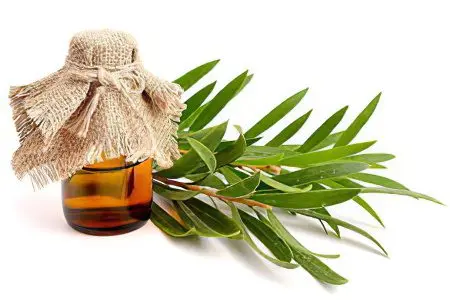
Tea tree oil is safe when used topically in prescribed dosages. However, in some cases, its use as a drug should be abandoned. First of all, people who have an individual intolerance to tea tree oil are at risk. This rarely happens, but the possibility cannot be ruled out. For this reason, you should test for an allergic reaction before using tea tree oil. To do this, you need to apply a small amount of it on the bend of the elbow and see if irritation appears on the skin after a while.
The use of tea tree oil is contraindicated in pregnant women, lactating women and young children. In its pure form, it can cause irritation, so for patients with sensitive skin, it is better to mix it with olive, sea buckthorn or peach oil. Avoid contact with tea tree oil in the eyes, mouth and mucous membranes. Do not apply it to the site of a burn, irritation or frostbite. Among the contraindications to the use of tea tree oil are also recent traumatic brain injuries. In such cases, it is dangerous for the patient’s life to engage in treatment by any means without prior consultation with a specialist.
When rinsing your mouth with a solution with the addition of tea tree oil, precautions must be taken. The agent should not enter the gastrointestinal tract. It is very important to use only a high-quality and fresh product for treatment. Store tea tree oil in a glass container in the refrigerator, and always carefully control the dosage when using.
However, in some cases, its use as a drug should be abandoned. First of all, people who have an individual intolerance to tea tree oil are at risk. [43], [44], [45]









